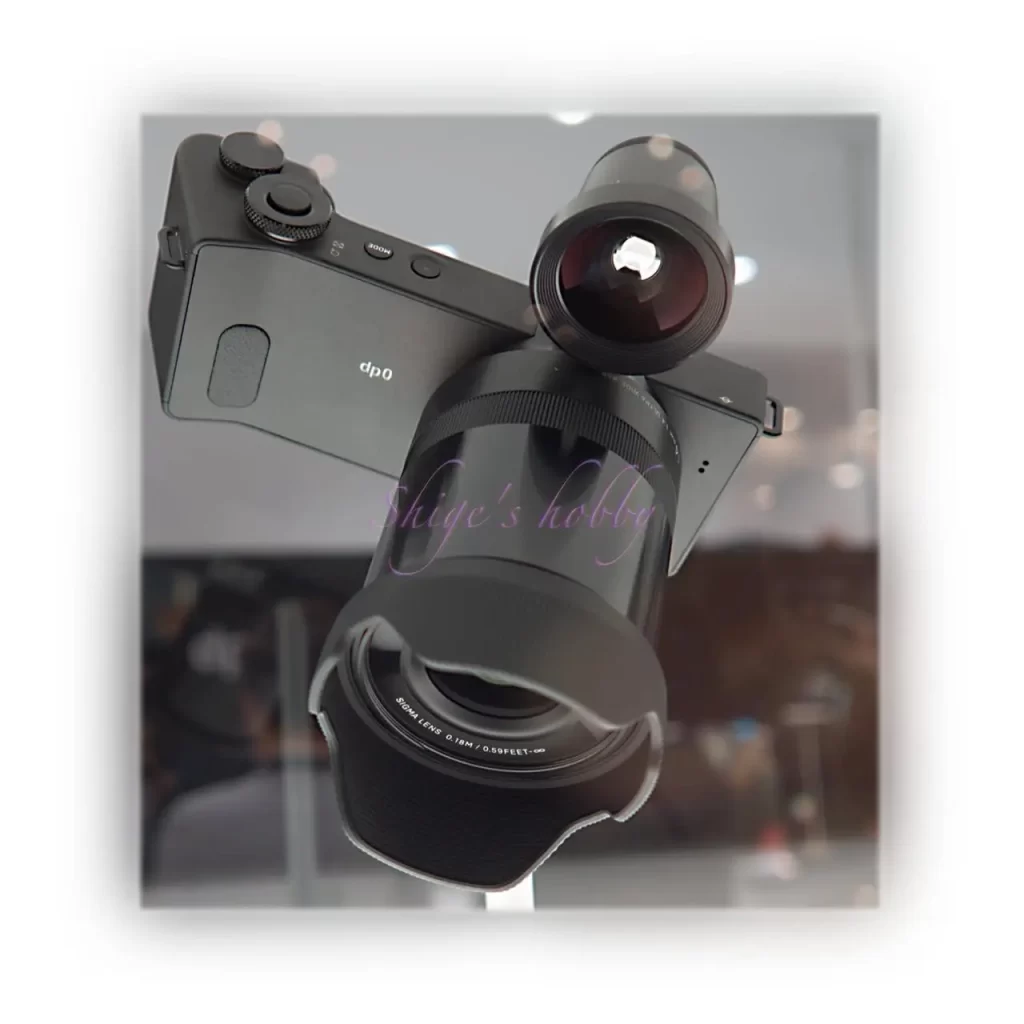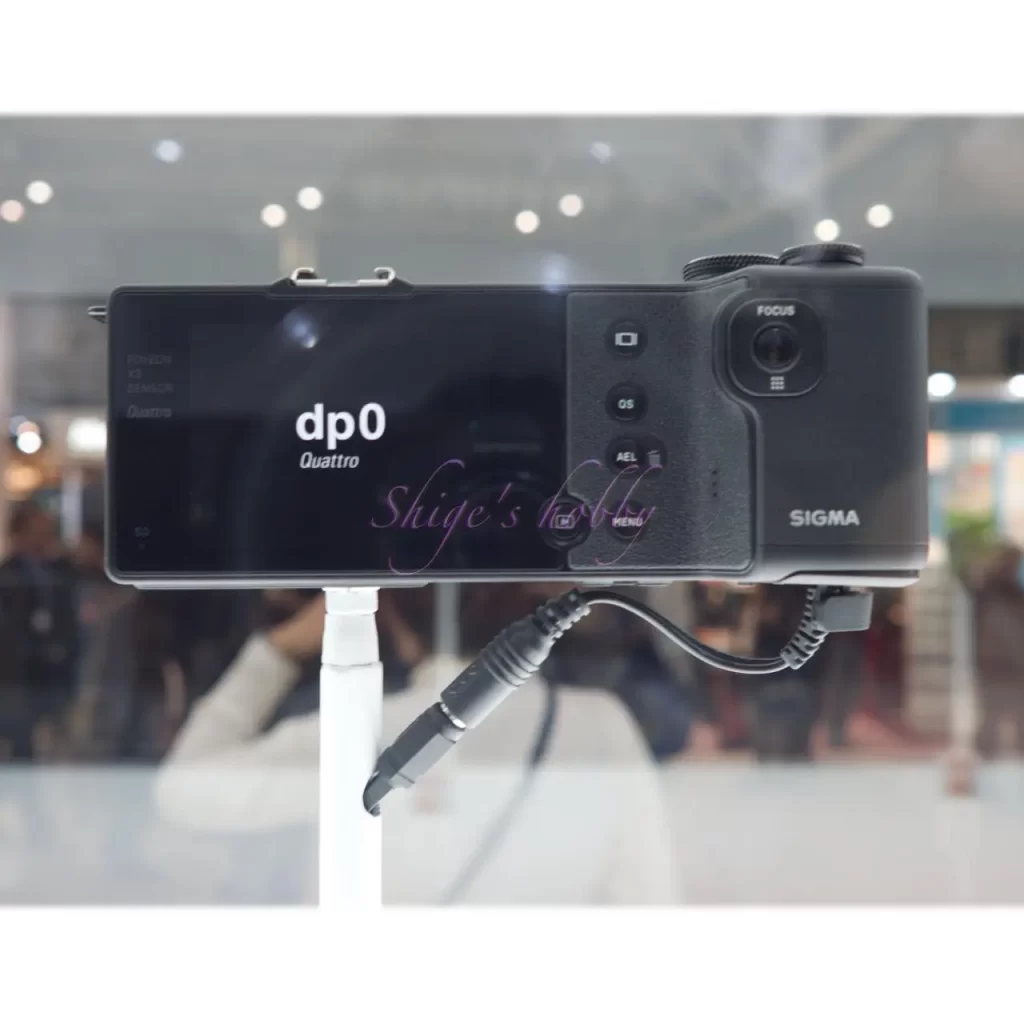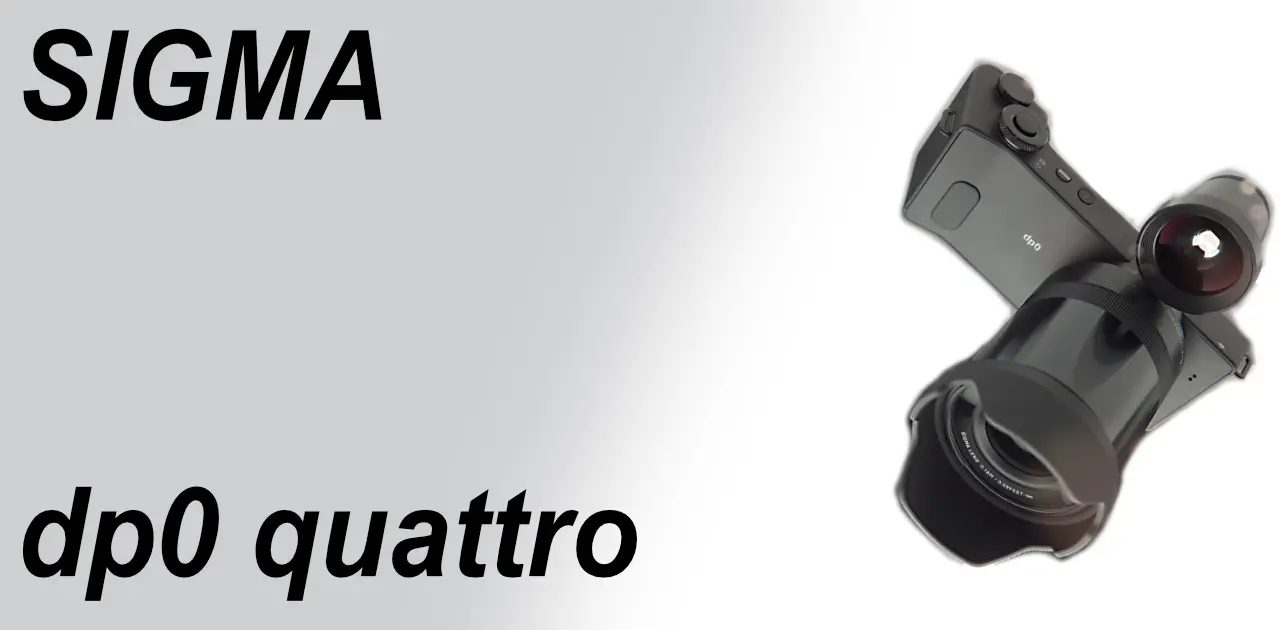Last updated on 2025-10-26
Zero distortion, ultra-wide-angle lens, integrated camera
A reviews and examples of Sigma compact digital camera dp Quattro 0
Table of contents
Gallery
[Best_Wordpress_Gallery id=u0022721u0022 gal_title=u0022SIGMA dp0Qu0022]Review


1.Camera overview
The dp0 Quattro is a lens-integrated digital camera equipped with an APS-C size 4th generation Foveon sensor released in 2015.
The sensor size is the same as the 3rd generation Foveon sensors such as the DP Merrill and SD1 (24mm x 16mm), and the lens focal length is 1.5 times that of the 35mm equivalent.
The 4th generation Foveon sensor has a three-layer structure of 20 million pixels + 5 million pixels + 5 million pixels called a Quattro sensor, and is designed with the concept of not increasing the total number of pixels by improving the basic resolution by making the top of B (blue) 20 million pixels, and reducing the number of pixels of G (green) and R (red) at the middle and bottom by 5 million pixels.
The total number of pixels has been reduced by about 5 million pixels from the 15 million pixels x 3 = 45 million pixels of the 3rd generation Foveon sensor.
As a result, the data capacity of the X3F has been slightly reduced from about 50MB per image for the DP Merrill and SD1 to about 45MB for the Quattro, and the data writing speed has improved.
The final image is created based on 20 million pixels of B (blue) information, so 20 million pixels is the basic pixel count.
The battery is a small rectangular battery called BP-51. This seems to be a necessary measure to realize the distinctive tonfa body, but Sigma seems to understand that the capacity is not enough, and two batteries are included in the package. This gives an impression of being a good service or a lack of ability in the first place.
The dp Quattro series has four models released, with 0=21mm equivalent, 1=28mm equivalent, 2=45mm equivalent, and 3=75mm equivalent.
2.Usage
I bought the wide-angle 21mm 0 because I was attracted by the lens that Sigma is proud of, which is zero distortion. Although it is a camera with an integrated lens, it is not a compact camera, so I will not call it a compact camera here.
If the later dp0 had been a camera with an APS-H size sensor of the SD Quattro H2 and a focal length conversion of 1.3 times, it would have become a legendary camera in many ways. I fantasize about this. Since it is a fixed lens camera, I wish they had done it, but the price would be close to 200,000 yen.
As for the other focal lengths, Quattro 1, Quattro 2, and Quattro 3, I have not purchased them because I personally do not have good memories of them, having purchased all of them, the DP1 Merrill, DP2 Merrill, and DP3 Merrill. The prices of both new and used dp Quattro series temporarily dropped just before the series was discontinued, but the prices have risen since the series was discontinued, and I do not think it is worth purchasing and using now.
As with previous Sigma digital cameras, the camera’s operation is not very fast, and even highly skilled photographers would have difficulty photographing moving objects. It seems to be more suited to photographing still objects such as buildings.
The lens and sensor are integrated, which makes the most of the advantages of the camera, and the resulting images are excellent, but camera shake is something to be aware of.
In my amateur opinion, since the Quattro sensor has four blue pixels for B, and one green and red pixel for R, there should be no problem with data with smooth gradations, but I have doubts about whether there will be any breakdowns in the boundaries of data with clear boundaries such as electric wires, which was previously a Foveon specialty.
However, I suspect that the information for one pixel is not determined by a simple RGB composition, but rather by calculating the uniform green and red information underneath from the shading information of the four blue pixels, to determine the final value of one pixel.
If the above assumption is correct, calculations based on B (blue) are necessary to determine the final data of G (green) and R (red), so a lot of computing power is required to create the final image data from the in-camera JPG recording and the X3F file using SPP, and I am impressed that it can be processed in a reasonably practical time considering the size of the camera.
I don’t like the tonfa-style body, so much so that I would have bought and used other cameras other than the dp0 if the body had been a typical square body camera. In particular, the poor fit of the camera when the lens hood and 21mm external viewfinder are attached is the worst of all the cameras I have used so far.
I think the dpX Quattro series would have been a better camera if it had a square body like the DPx Merrill and the BP-22 or BP-61 for SLRs was used as the battery.
Sigma’s strategy of releasing a lens-integrated digital camera every time they create a new sensor is very good. I look forward to the development of new sensors and the release of compact cameras in the future.
3.X3F file
X3F files store information on the three colors R, G, and B for each pixel, so the amount of data is three times that of a normal Bayer sensor.
I have been using SIGMA PHOTO PRO (hereinafter referred to as SPP), which processes X3F, since the SD9 era, but I complained that it was unstable and slow. However, when I used it on a Mac mini equipped with an M2 Pro in 2024, I hardly saw any accidental crashes of SPP, and I realized that the image processing speed had reached a practically sufficient speed. It was an event that made me feel the benefit of the improved processing speed due to the increased CPU power of the PC.
I also tried using a freeware utility software that converts X3F to DNG, but in the version I used, it was difficult to achieve the same quality as SPP unless the image after conversion to DNG was processed quite a bit, and I had the impression that it was difficult to master. It is unclear whether it has been improved since then.
If the image after DNG conversion can be obtained as equivalent to the SPP default, the ideal workflow for users who are accustomed to other software would be to fine-tune it with other software, but it was not so easy. The conversion software is freeware created by an individual, so users have no right to complain.
I found out that the image can be developed using the image processing software Affinity Photo, so I tested it on this page. I know that I have to study the adjustment method carefully to get the same results as SPP, but since SPP can output adjusted images without stress, I haven’t pursued it too deeply. I think that the better workflow for now is to output JPGs using SPP and then make final adjustments using Affinity Photo.
As of 2024, development of a new Foveon sensor seems to have stalled. I am curious to see if I will come across new X3F data in the future.
4.DNG file
Cameras with Quattro sensors now allow you to choose between the traditional X3F and DNG formats for raw data.
The DNG data created by the dp Quattro series is 100MB, so the writing speed to the media during shooting is slow, and it consumes more memory card capacity than the X3F, which is about 45MB.
If you are in an environment where you can use SPP comfortably, there is no need to insist on DNG recording.
The reason for the large size of DNG data is that it stores both 20 megapixels of RGB data after calculation and 20 megapixels of B (blue), 5 megapixels of R (red), and 5 megapixels of G (green) data before calculation, but since normal 20 megapixel raw data is about 20MB and X3F image data before calculation is about 45MB, it seems a little too large even when other additional information is added.
For more information on DNG files, see the Adobe Systems website, the project’s proponent.
Specification
| Name | dp0 Quattro | dp1 Quattro | dp2 Quattro | dp3 Quattro |
| Effective Pixels | 29MP (20x5x5) | ← | ← | ← |
| Image sensor | FOVEON X3®(CMOS) 23.5×15.7mm | ← | ← | ← |
| Focal length | 21mm(14mm) | 28mm(18.5mm) | 45mm(30mm) | 75mm(50mm) |
| Lens Construction | 11elements in 8groups | 9elements in 8groups | 8elements in 6groups | 10elements in 8groups |
| Leaf blade | 7 | ← | 9 | 7 |
| Back LCD | 3.0 type, 920,000 dots | ← | ← | ← |
| EVF | なし | ← | ← | ← |
| Battery | BP-51 | ← | ← | ← |
| Size(mm) W x H x D | 161.4 × 67 × 126 | 161.4 × 67 × 87.1 | 161.4 × 67 × 81.6 | 161.4 × 67 × 101.8 |
| Weight(g) (exclude battery,Memory card) | 500 | 425 | 410 | 465 |
| Release date | 2015.7.10 | 2014.10.24 | 2014.6.27 | 2015.3.12 |
Options
- body case
- Dedicated lithium rechargeable battery (Li-ion Battery Pack BP-51)
- Dedicated charger (Battery Charger BC-51)
- AC adapter SAC-6 (used with DC connector CN-21)
Reference links
Update history
- 2024.8.25
- 2024.2.9:First draft
Affiliate Link
- Please see the disclaimer regarding advertising here.
- Italicized links in the text are advertisement links that take you to other sites.
- Amazon Affiliate Link/Keyword=Sigma
- Amazon Affiliate Link/Keyword=Sigma lens
- Amazon Affiliate Link/Keyword=Sigma books



Be First to Comment